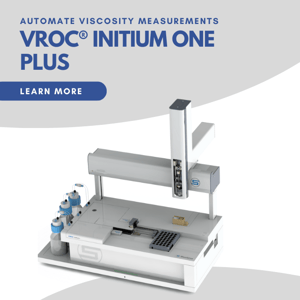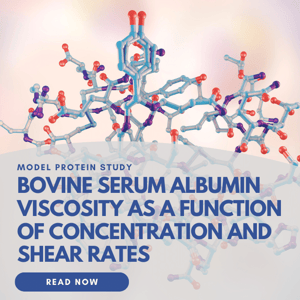
Viscosity of F12 Cell Culture Media
Application Note Download
Cell culture media is a complex fluid composed of nutrients required for cells to grow, proliferate, and differentiate. Media is specifically designed to maintain the ideal nutrients, hormones, pH, and osmotic environment necessary for cell growth. Different types of cells prefer different types of media. For example,
many mammalians cell lines are grown and maintained using Ham’s or F12 media, while insect cells are typically grown in Grace’s medium. Furthermore, some types of cells are best grown in mixtures of different media formulations such as combination medias comprised of DMEM and F12. Characterizing the differences between formulations is vital for developing new products and for maintaining quality control for existing product lines.
In this application note, we investigated the viscosity of F12 media formulations. We showed that filtering the media with a 0.2 μm filter does not impact media viscosity, there is not a difference in viscosity between purchased and homemade DMEM/F12 media, and the viscosity of DMEM/F12 is equivalent to the DMEM component in the formulation
.jpeg?width=300&name=Woman%20scientist%2c%20documents%20and%20hands%20writing%20_575258496-min(1).jpeg)


.png?width=200&height=58&name=RheoSense%20Logo%20(REGISTERED).png)



